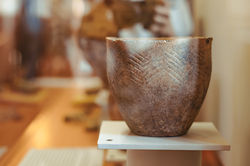WORLD HISTORY
 |  |  |
|---|---|---|
 |  |  |
KILWA
GENERAL INFO
Kilwa was founded by settlers from Arabia and Iran, in the 10th century. Kilwa peaked in the 14th and 15th centuries. Kilwa started its decline in 1505 - 1512, after being inhabited by the portuguese. Kilwa was in a trade route with the indian oceans, which opened a trade route with india for spices and other goods, putting them in a profitable middleman position. Though not the only traders, this would still prove useful. The Kilwa had few foes, as they were largely merchants, their only enemies being the portuguese, whim eventually inhabit them, as noted above. Their diet consisted of farming and fish. They were a swahilian speaking nation with a seiries of sultans controlling the regions. Kilwa was an islamic nation, and a non warfaring one at that.
SPECIAL FACTS
The Great Palace has been described as the earliest surviving major building on the coast of East Africa, containing gardens, a pool, private residence, and an area for commercial activities one of the regions main source of wealth. It was built by the sultan Al-Hasan bin Sulaiman, and is by far one of the largest and most sophisticated ancient buildings in the regions.
TODAY
The people who live on the islands today are very poor. There are no remains of the ancient civilizations, aside from ruins.
WORKS CITED
Britannica, The Editors of Encyclopaedia. “Kilwa.” Encyclopædia Britannica, Encyclopædia Britannica, Inc., 20 June 2017, www.britannica.com/place/Kilwa.
Centre, UNESCO World Heritage. “Ruins of Kilwa Kisiwani and Ruins of Songo Mnara.” UNESCO World Heritage Centre, whc.unesco.org/en/list/144.
“Kilwa Kisiwani, Tanzania.” Smarthistory, smarthistory.org/kilwa-kisiwani-tanzania/.
“The Oriental Institute of the University of Chicago.” The Nippur Expedition | The Oriental Institute of the University of Chicago, oi.uchicago.edu/museum-exhibits/nubia/nubian-archers.
